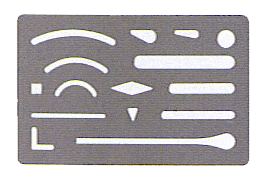I did this on a project uke, which also had the frets set direct into the neck.
Removal: I took a pair of side cutters (hope this translates into US - picture
here and rocked each fret out, working from one side then the other. Go slow, keep changing sides, only rock a small amount so as not to pull out chips of wood.
New frets (first attempt): I cleaned out the slots then tapped new fretwire in with a hammer. These really didn't go in level, and I spent a lot of time trying to level them down. I've just decided I'll need to re-do the job.
New frets (slightly more experienced): Since then I've built three ukes, and just fretted the third. This last time I've done a reasonable job. Tips as follows:
1. You will probably need to cut the slots wider than they are at present, to take narrow (usually described as mandolin/ukulele) fretwire. Slots too narrow are a real problem. Experiment on a piece of scrap hardwood and install a few frets. I've found that the slot needs to be only
just narrower than the tangs on the fretwire. On my recent fretboard my saw was a fraction wider than ideal, but a drop of CA glue either end wicks into the slot and holds the fret - you can tap it a bit more after glueing if one end is high.
2. With a wide slot, pressing the frets in with pliers is more controllable than hammering them. For your job you'll need something like
water pump pliers. Wrap the jaws of the pliers in PVC insulation tape to avoid marking neck or frets.
3. Cut ends off with your side cutters.
4. File ends flat to side of neck. I don't know how to do this without marking the finish. Masking tape, and go more carefully than I did?
5. Bevel over ends of frets - protect neck and fingerboard surface with masking tape. Go slow!
6. Dress ends of frets - use a small triangular file to remove the sharp edges each side of the fret cause by step 5. I'm about to cut a piece from a soft drink can to protect the neck as I do this. Butt it up to the fret, bend the edge over the neck, and then a couple of strokes of the file.
7. Polish up with fine grade sandpaper.
8. Check frets against a steel rule or other straight edge - if you can see light between the fret and the edge, frets either side are too high. Press/tap them down.
9. Use a credit card end on to rock each fret against its neighbours - if it rocks, that fret is too high. Press/tap as before.
10. If more radical levelling is needed, go to frets.com and read how to do it properly!
Finally, ignore any of the above (apart from noting the mistakes to avoid) if someone more experienced posts better techniques.

